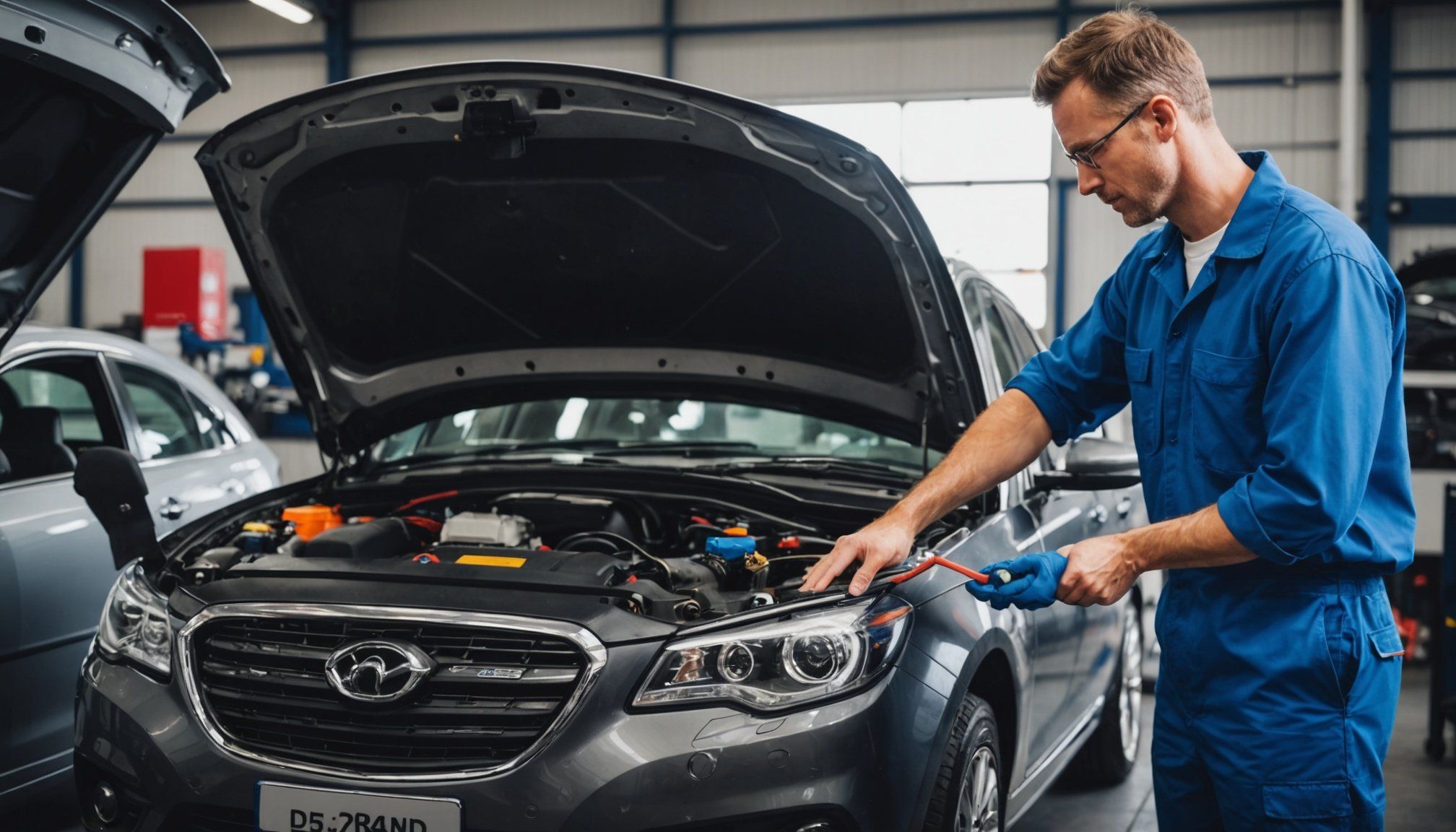Keeping your vehicle in top-notch condition is crucial for safety and performance. Whether you drive a compact car or a robust SUV, regular maintenance ensures your vehicle remains reliable. In the UK, car ownership comes with a responsibility to maintain your vehicle, not just for your safety but also for the safety of others on the road. In this article, we will explore a comprehensive vehicle maintenance checklist that every UK car owner should follow to keep their car in excellent working order. This guide will cover essential checks and inspections, focusing on key systems and components of your vehicle.
Understanding the Importance of Vehicle Maintenance
Vehicle maintenance is not merely a routine task; it is a crucial practice that determines the safety, longevity, and efficiency of your car. Regular checks can prevent minor issues from escalating into costly repairs, ensuring that your vehicle remains roadworthy. In the UK, the unpredictable weather and road conditions demand that drivers take their vehicle’s maintenance seriously.
This might interest you : What are the best strategies for negotiating a vehicle price in the UK?
When you invest time in regular maintenance, you also enhance the overall driving experience. A well-maintained car runs smoother and is more fuel-efficient, saving you money in the long run. Additionally, many insurance companies offer lower premiums for vehicles that have a proven maintenance history, which adds to the financial benefits.
Moreover, in the unfortunate event of an accident, having a well-maintained vehicle can be vital in demonstrating that you took reasonable measures to ensure your car’s safety. This can influence liability decisions during insurance claims. Understanding the scope of what to include in your checklist can empower you as a responsible car owner. Therefore, it is essential to establish a routine that incorporates various checks and inspections designed specifically for your vehicle.
Topic to read : What are the notable differences between UK and EU vehicle safety regulations?
Essential Checks for Your Vehicle’s Engine and Fluids
The engine is the heart of your vehicle, and ensuring its proper function is paramount. Regular checks on your engine’s condition should include examining the oil levels, coolant levels, brake fluid, and transmission fluid. Here’s a closer look at what you should routinely monitor:
-
Oil Checks: Regularly check your oil levels and quality. Dirty or insufficient oil can severely damage your engine. You should change the oil as per the manufacturer’s recommendations, typically every 5,000 to 10,000 miles.
-
Coolant Levels: The cooling system is vital for preventing your engine from overheating. Ensure that the coolant is at the right level and free from contaminants.
-
Brake Fluid and Transmission Fluid: Low levels or dirty brake fluid can lead to brake failure, while low transmission fluid can affect gear changes and overall vehicle performance.
-
Air Filter Inspection: The air filter prevents dirt and debris from entering your engine. A clogged air filter can reduce engine performance and fuel efficiency.
By regularly inspecting these fluids, you not only maintain your engine’s performance but also promote the longevity of your vehicle. Additionally, scheduling routine inspections with a professional mechanic will help pinpoint potential issues before they become major problems.
Brakes and Tires: Key Safety Components
Your vehicle’s brakes and tires are critical for ensuring your safety on the road. A failure in either can lead to catastrophic results. Thus, regular checks are essential.
-
Brake Inspection: Regularly inspect the brake pads and rotors for wear. Listen for any unusual noises when braking; squeaking or grinding sounds may indicate that your brake pads are worn out. Brake fluid should also be checked for levels and clarity.
-
Tire Condition: Check your tires for tread depth, pressure, and any visible signs of damage. The minimum legal tread depth in the UK is 1.6mm, but for optimal safety, many experts recommend changing tires at 3mm. Under-inflated tires can affect fuel efficiency and overall handling.
Additionally, consider the age and condition of your tires. Even if the tread is sufficient, tires over six years old may need replacement due to degradation over time.
- Alignment and Balancing: Regularly check the alignment and balancing of your tires. Misalignment can lead to uneven tire wear and affect your vehicle’s handling.
Keeping these components in check not only ensures your safety but also enhances the driving experience. A well-maintained braking system provides peace of mind, while properly inflated and aligned tires contribute to better fuel efficiency and a smoother ride.
Electrical System and Lights: Visibility Matters
Your vehicle’s electrical system plays a critical role in its operation, impacting everything from starting the engine to indicating turns. Regular checks can prevent electrical failures that could leave you stranded or unsafe on the road.
-
Battery Checks: Inspect your battery regularly for corrosion or loose connections. The average lifespan of a car battery is about three to five years. Testing the battery’s charge can help determine if it needs replacement.
-
Lights and Indicators: Regularly check all lights on your vehicle, including headlights, brake lights, and indicators. Ensure they are functioning properly and replace any burnt-out bulbs immediately, as good visibility is essential for road safety.
-
Fuses and Wiring: Inspect the fuses and wiring for any signs of wear or damage. Faulty wiring can lead to system failures and potential safety hazards.
-
Wiper Blades and Fluid: Ensure your wiper blades are in good condition for clear visibility during rain. Also, check the windshield washer fluid levels and refill as necessary.
Maintaining your electrical system and lighting is not only about ensuring your car is operational but also about your visibility and the ability for other drivers to see you. This is especially crucial in the UK, where inclement weather can significantly reduce visibility.
Final Thoughts: Creating Your Vehicle Maintenance Checklist
A vehicle maintenance checklist serves as a vital tool for responsible car ownership. It helps you systematically cover all the essential areas of maintenance, ensuring that nothing is overlooked.
-
Create a Routine: Establish a regular schedule for your checks. Depending on your driving habits, you might need to perform checks monthly, quarterly, or biannually.
-
Keep Records: Maintain a log of all maintenance activities, including inspections, fluid changes, and repairs. This not only helps track your vehicle’s condition but can also be beneficial for resale value.
-
Know Your Vehicle: Familiarize yourself with your vehicle’s manual. Understanding specific recommendations for your make and model will enhance your maintenance efforts.
-
Professional Help: Don’t hesitate to consult with a professional mechanic for in-depth inspections and services. They can provide insights that you may not be aware of.
By ensuring that these aspects of maintenance are included in your checklist, you will not only enhance the performance of your vehicle but also contribute to overall road safety. Remember that preventing problems is always easier and cheaper than fixing them later.
In conclusion, a thorough vehicle maintenance checklist is essential for every UK car owner. By regularly performing checks on the engine, fluids, brakes, tires, and electrical systems, you can ensure that your vehicle remains safe and reliable. A proactive approach to maintenance reduces the risk of breakdowns and accidents, enhances performance, and can save you money over time. Take the time to develop a checklist tailored to your vehicle’s needs, and enjoy the peace of mind that comes with knowing your car is in good condition.











